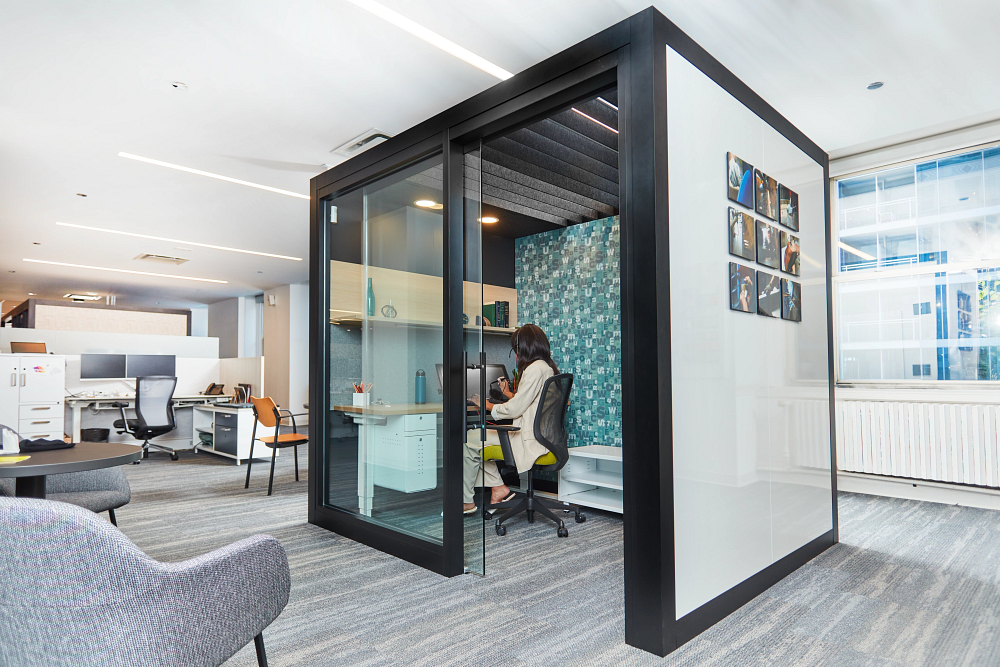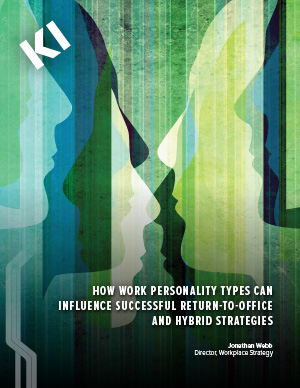
PERSONALITY TYPES AND
The Future of Work
Considering the post-pandemic challenge of determining where work happens, we set out to investigate employees’ attitudes about remote, hybrid, and in-office work and discover how these attitudes are influenced by personality types. The insights from our research can help workplace leaders and interior designers make informed decisions that support employees and drive organizational success in the future of work.
THE RESEARCH
Myers-Briggs Type Indicator Assessment
The Myers-Briggs Type Indicator (MBTI) assessment looks at four areas of personality type as evaluated by preference toward:
- Extraversion (E) or Introversion (I)
- Sensing (S) or Intuition (N)
- Thinking (T) or Feeling (F)
- Judging (J) or Perceiving (P)

To discover the workplace implications of these four personality assessments, we partnered with Myers-Briggs on a research survey that:
- Questioned participants about their work preferences.
- Collected information about their environments.
- Obtained their views on job satisfaction.
THE RESULTS
What Personalities Want at Work
Where does the traditional workplace fit in our post-pandemic world?
Instead of relying on subjective views and prescriptive mandates for the answer, we discovered insights into how MBTI personality preferences can help. For example:

Extraverts are more likely to be open to the RETURN-TO-OFFICE movement than Introverts. However, that is not their exclusive preference.
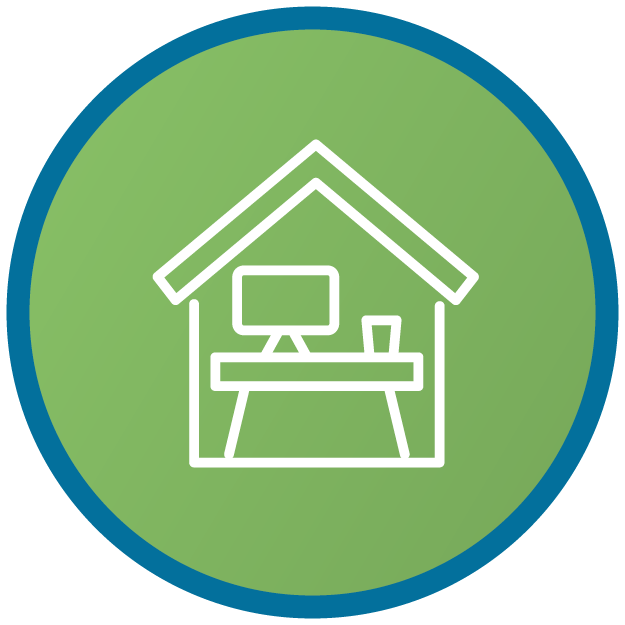
Among hybrid workers, both Extraverts and Introverts agreed they would like to work from HOME more often.

Hybrid workers with a Sensing preference spent, on average, more time working in the OFFICE than those with an Intuitive preference.

Respondents with Intuitive tendencies were more inclined to work for organizations that lacked a specific rule regarding OFFICE ATTENDANCE FREQUENCY.

In the office, respondents with a Thinking preference were more likely than those with a Feeling preference to prefer NEAT AND ORGANIZED WORKSPACES.

Among hybrid workers, those with a Judging preference were more likely to say they prefer to WORK FROM HOME more often.
Putting Into Practice
Workplace Design for Personalities
Loud and clear, personality types had distinct preferences for workplace design.
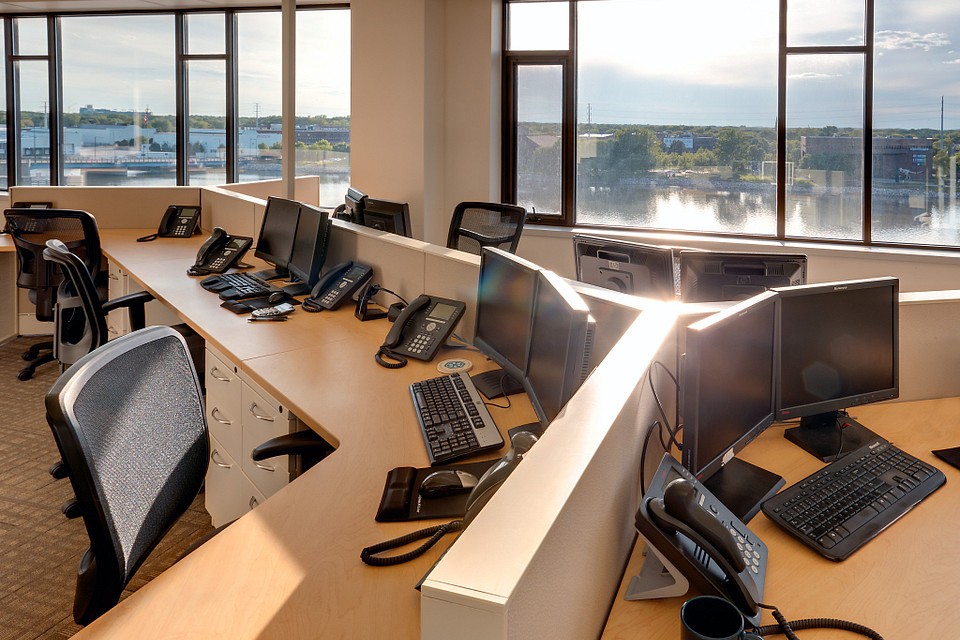
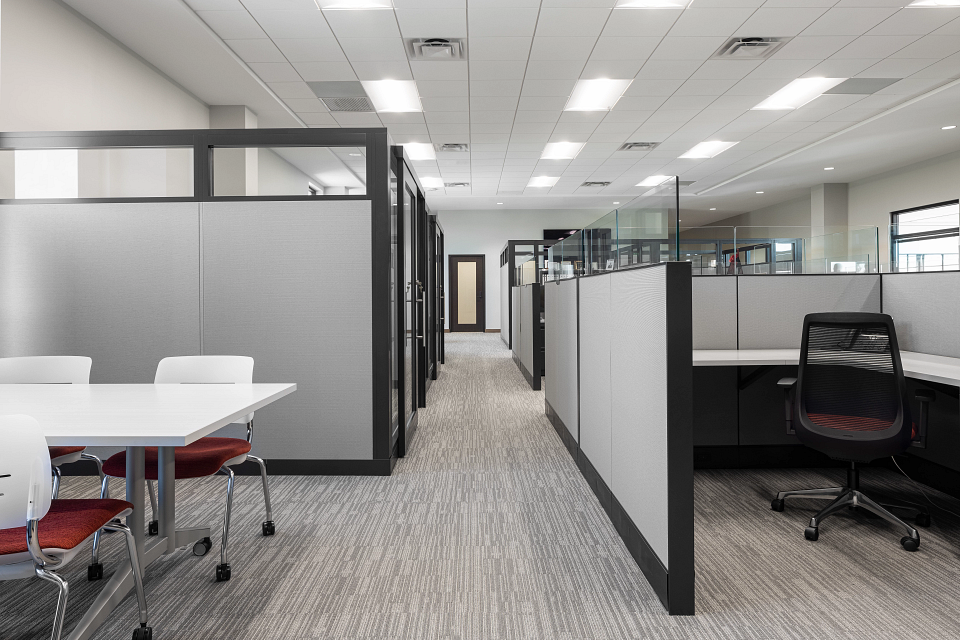

Workplace Personalities =
Workplace Opportunities
Personality assessments provide valuable insight into the needs and preferences of workers in today’s workplace evolution. The Myers-Briggs tool can be especially useful in achieving smoother transitions, greater success, and better approaches for helping employees thrive.
Connect with your dedicated KI specialist to begin the discussion!




























